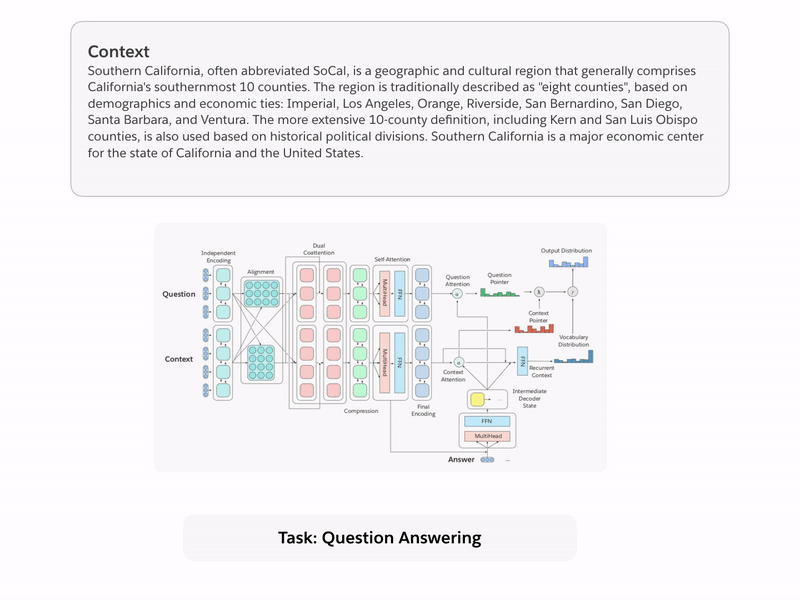 EMERGING TECH
EMERGING TECH
 EMERGING TECH
EMERGING TECH
 EMERGING TECH
EMERGING TECH
Just a few years ago, asking your phone a question to find information on the internet was, well, pretty much out of the question because computers weren’t all that great at understanding phrases outside a narrow few.
Now, thanks to advances in machine learning, we think nothing of Google or Siri answering our queries with pretty good responses. But this progress has been painstaking, requiring intensive training on very specific natural language processing tasks such as translating text into speech, analyzing sentiment or understanding pronoun references.
That’s the problem Salesforce.com Inc. researchers think they’ve started to solve. Today, they’re releasing a paper that outlines a way to use a single model that can handle 10 separate NLP tasks at once. The paper is essentially a challenge, called the Natural Language decathlon or decaNLP for short, paired with a “multitask question answering network” or MQAN model that jointly learns all 10 tasks at once.
“Our model is like the Swiss Army Knife for NLP,” Richard Socher (pictured), chief scientist at Salesforce, said in an interview. In other words, researchers and developers essentially can use one tool instead of having to use one for each of those tasks, which have required hypercustomized models that can’t be used for any other task.
Ultimately, the result could be much more capable chatbots, for instance, that can converse more naturally with people.
Socher drew an analogy to ImageNet, the database of labeled images he helped develop that is widely seen as kicking off the revolution in deep learning that led to breakthroughs in image recognition. But there’s no one task that similarly defines natural language processing, which encompasses things such as machine translation, natural language inference, goal-oriented dialogue and pronoun resolution. “In NLP, there isn’t really a single task where all researchers think if you make progress on it, it will improve NLP overall,” Socher said.
The approach of the Salesforce researchers, who also include Bryan McCann, Nitish Shirish Keskar and Caiming Xiong, was to pose each of those tasks as a question answering problem. “Question answering is so broad — you can literally ask any question — it gives you the flavor of a single model for several tasks,” Socher explained.
MQAN allows for what is known as “zero-shot” learning, which means the model can handle tasks it hasn’t seen before or been trained to do. “You’re applying it to a completely new task, which has never been done before,” McCann said. “Most models are not robust to rephrasing or slight variations in meaning. Ours is. Even if it’s never seen anything like that, it can do it.”

To bring it down to earth, he added, chatbots could do a much better job with phrases that aren’t precisely what it has already learned, more like how people converse.
Salesforce is open-sourcing the model, so “people can pick up right where we left off,” said McCann.
Salesforce provided a perspective from noted AI researcher Yoshua Bengio, professor for the Department of Computer Science and Operations Research at the University of Montreal, who has worked with Socher in the close-knit machine learning community.
“Since I started working on word embeddings for representing natural language almost twenty years ago, my goal was that the same representations should be used for all natural language tasks,” he said. “The idea in this paper to represent all of these tasks as question-answering is crucial, but it was not enough. The authors came up with the natural language decathlon to define a benchmark for this objective, and introduced architectural innovations which finally made this dream possible.”
Support our mission to keep content open and free by engaging with theCUBE community. Join theCUBE’s Alumni Trust Network, where technology leaders connect, share intelligence and create opportunities.
Founded by tech visionaries John Furrier and Dave Vellante, SiliconANGLE Media has built a dynamic ecosystem of industry-leading digital media brands that reach 15+ million elite tech professionals. Our new proprietary theCUBE AI Video Cloud is breaking ground in audience interaction, leveraging theCUBEai.com neural network to help technology companies make data-driven decisions and stay at the forefront of industry conversations.